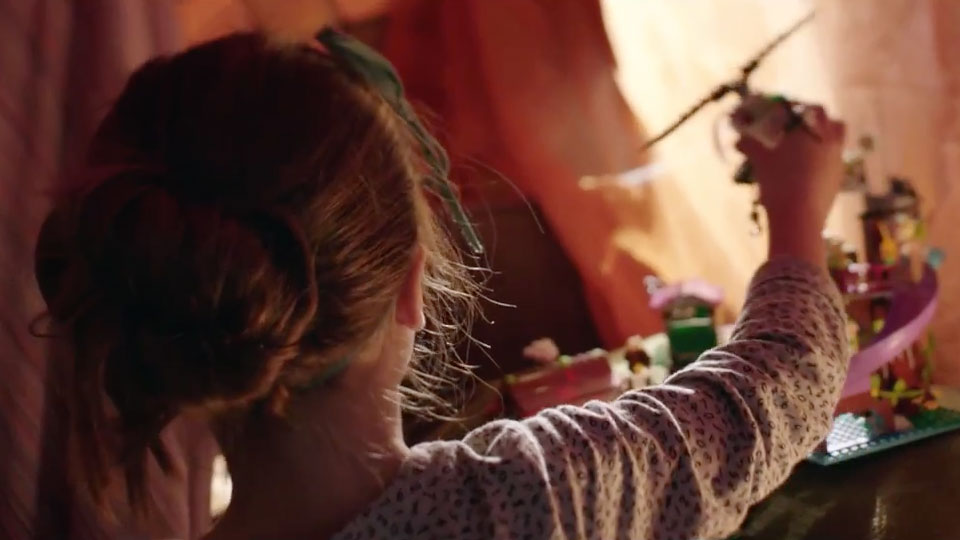I spend a lot of time, much more time than I should, thinking about just what games are. Not what they mean to us, though also that, but what they are, where they begin and end, and what place we the players have in considerations of games. This is a topic Bianca and I pass back and forth, though often she’s thinking more about narrative and potential, while I skew toward considerations of systems. It’s perhaps why we enjoy collaboration so much; our interests overlap in productive ways. But I digress. My focus here is on the systems we call games, the edges of what we think of as games, and what happens when we consider the player as part of that system.
 Consider Firewatch. That game – after the prologue – has one narrative. Things happen. The dialogue may shift, one player may explore more than another, but the player-as-Henry will always encounter the rowdy teenage girls, the scout camp, and more. There will always be a fire. The only way to avoid these events is to refuse to play the game as guided; play the game and, eventually, the story will unfold. But how each player experiences that story may be wholly different based on their approach to the prologue and the shaping of story there. This has little impact on the main throughline of events, but enormous impact on Henry and Delilah, and on the player as well. The way then that those events are experienced may also change, even if the events themselves do not.
Consider Firewatch. That game – after the prologue – has one narrative. Things happen. The dialogue may shift, one player may explore more than another, but the player-as-Henry will always encounter the rowdy teenage girls, the scout camp, and more. There will always be a fire. The only way to avoid these events is to refuse to play the game as guided; play the game and, eventually, the story will unfold. But how each player experiences that story may be wholly different based on their approach to the prologue and the shaping of story there. This has little impact on the main throughline of events, but enormous impact on Henry and Delilah, and on the player as well. The way then that those events are experienced may also change, even if the events themselves do not.
Similarly, while a game like Bound can be played linearly or not, the game is in and of itself pretty straightforward. The player experiences the world rather than impacting it; while you can move and interact, you cannot change the events, only discover them. But the ambiguity in the events and backstory as everything is revealed can be read in a variety of ways. Two players may go through Bound’s shifting world, play sequences in the same order, in the same way, choosing the same ending, but could well report having two completely different experiences with the emotional qualities of the game.
In Half-Real, Jesper Juul examines a number of definitions of game, but Juul’s most recent of those main seven was from Salen & Zimmerman’s 2003 Rules of Play, and Juul’s own book, published in 2005, predates a number of shifts in the industry. The landscape of video games changes often, and dramatically; we need newer thoughts built on and over older definitions in order to adapt and adjust Juul’s hard lines and conclusions about what may and may not be a game. Juul concentrates on interplay between rules and fiction, but mostly limits himself to considering code, what code creates, and how fiction may be laid over and around the code. Only near the end, when he invokes literary theorist Stanley Fish does he talk about subjectivity and cultural interpretation, but Fish is only there to remind us that we should not interpret everything literally. Juul also says this doesn’t mean we should accept blanket subjectivity. These two passes at meaning say, essentially, that these subjects are not the subject of Half-Real; Half-Real is concerned with something else altogether, and that something is not the player, or what the player brings to the table. Which is fine; every book cannot be everything, and Juul was focused elsewhere.
So where is the player? Who defines games in terms of the player?
In a 2015 article for Games Studies, Veli-Matti Karhulahti offers a number of newer definitions and arguments (Leino, Iversen, and others are mentioned here), and while Karhulahti’s take evolves through the piece, which is presented as a whimsical Socratic dialogue, the paper finally concludes that video games are artifacts that evaluate performance. This is not far off from Koster’s pattern-reading at the basis of fun in games, and while it includes the player – who else would be evaluated? – this take is similarly not player-based.
Katherine Isbister, in How Games Move Us, speaks to the ability of games to spark emotional qualities and real-world connections, but doesn’t spend as much time defining games beyond mentioning that perhaps we shouldn’t be so wrapped up in one idea of games, just as we don’t rely on a single idea of movies and their potentiality. But even she repeats Sid Meier’s famous definition. as do many others, Juul included: a game, Meier said, is “a series of interesting choices.” We can program an AI to beat chess masters, and bots to take over functions in games we don’t want to bother with, but is that play? A machine could make choices in Life Is Strange to produce different outcomes, but that doesn’t seem like play to me; that’s machine-generated fiction. Play is experience, and it’s loaded, personal, unique. We may pass the boundary of a magic circle to enter a game, but we bring our whole selves with us as we enter, and there’s no wall to close out the world when we do so. Bound’s balletic lead character dances only on the screen, and only without the bounds (heh) of each level, each ledge, but where one player sees beauty, another sees extraneous, inefficient movements, and thus the game experience splits, becoming something different, unique to each case.
 Espen Aarseth famously groused that all the obsession with Lara Croft’s body was a bit silly; after all, he wouldn’t navigate the game differently with any other body, so what’s the body matter anyway? Aarseth may have walked this back a little later, but this reading of experience shouldn’t become a monolithic one, either; just as different games have the potential to spark different ideas and emotions in players, as Isbister says, different games, different heroes, villains, and experiences, all may have wildly varying impacts on players, and produce an entire spectrum of experiences – both in terms of code and story. In terms of everything. We needn’t choose between discussing Lara Croft and the mechanics of Tomb Raider. We can and should do both. To do otherwise is to ignore decisions made in the creation of the artifact, but also to ignore differences among players. The design of Lara Croft does very much impact other players, after all; should we tell them it doesn’t? Is one person wrong if another doesn’t have the same experience? Or do both (all) experiences exist simultaneously? My game doesn’t change yours. This isn’t the blanket subjectivity Juul warned us about, but rather a consideration that we bring our whole selves with us when we turn on a game. That a cultural, personal, and historical look at the player in that system is necessary.
Espen Aarseth famously groused that all the obsession with Lara Croft’s body was a bit silly; after all, he wouldn’t navigate the game differently with any other body, so what’s the body matter anyway? Aarseth may have walked this back a little later, but this reading of experience shouldn’t become a monolithic one, either; just as different games have the potential to spark different ideas and emotions in players, as Isbister says, different games, different heroes, villains, and experiences, all may have wildly varying impacts on players, and produce an entire spectrum of experiences – both in terms of code and story. In terms of everything. We needn’t choose between discussing Lara Croft and the mechanics of Tomb Raider. We can and should do both. To do otherwise is to ignore decisions made in the creation of the artifact, but also to ignore differences among players. The design of Lara Croft does very much impact other players, after all; should we tell them it doesn’t? Is one person wrong if another doesn’t have the same experience? Or do both (all) experiences exist simultaneously? My game doesn’t change yours. This isn’t the blanket subjectivity Juul warned us about, but rather a consideration that we bring our whole selves with us when we turn on a game. That a cultural, personal, and historical look at the player in that system is necessary.
What is a game before the player arrives? It is code or components; it is a formal system with rules. What happens when the player arrives? Well, that depends wholly on the interplay between player and system, but it seems fair to say there is a shift. That system changes, a change that may be temporary (as with most video games) or permanent (if, say, the players repaint all the pieces of a board game). An adjusted version of that system forms around the player or players.
When I heard about Bethesda’s decision to cease releasing early review copies, I wondered, and still do, about what might be lost. We will see streamers experience games, but the onus on reviewers now grows heavier; they will need to procure games quickly and play artificially fast, perhaps missing experiences, almost certainly missing the time to reflect on those experiences. What is the result? An “objective” half-review? A kneejerk reaction? Meanwhile, streamers are playing, and we may see the game for ourselves, even if we can’t experience it. To use the Lara Croft example, we can judge, short of embodying/controlling ourselves, whether or not we find a body or its treatment an issue. Is this closer to demonstrating gameplay, the opposite, or just another mode? How does the player fit into this scenario, and is the player being served? It’s a complicated question, particularly when considering preorders. But games, too, are complicated, difficult to make and maintain, and like AR and VR, constantly barrelling full steam ahead. I’m just not sure we always know what we’ll find around the bend.




